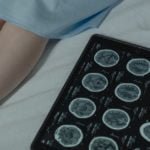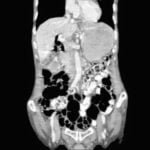
Decoding the Neurobiology of Emotions: Unveiling the Intricate Tapestry of Human Feelings
Student corner
Contributed by
Ms Aaliya Masoodi
Introduction:
The neurobiology of emotions delves into the complex interplay of neurochemicals, brain structures, and neural pathways that underlie our emotional experiences. This article aims to unravel the meaning of neurobiology of emotions, explore its mechanisms, highlight symptoms associated with dysregulation, present a compelling case study, and discuss relevant theories and statistics.

Understanding Neurobiology of Emotions:
Neurobiology of emotions involves the study of how our brain processes, interprets, and responds to emotional stimuli. The key players in this intricate dance include brain regions like the amygdala, hippocampus, and prefrontal cortex, along with neurotransmitters such as serotonin, dopamine, and norepinephrine.
Mechanisms at Play:
The amygdala, often referred to as the emotional hub, evaluates incoming stimuli for emotional significance. Once triggered, it sets off a cascade of reactions, influencing physiological responses and shaping our conscious emotional experiences. The prefrontal cortex, responsible for executive functions, plays a crucial role in regulating and modulating emotional responses.
Symptoms of Neurobiological Emotion Dysregulation:
- Intense Mood Swings: Rapid and extreme shifts in mood, often disproportionate to the triggering events.
- Impaired Emotional Processing: Difficulty understanding, expressing, or interpreting emotions.
- Psychosomatic Symptoms: Physical manifestations of emotional distress, such as headaches or gastrointestinal issues.
- Social Impairments: Challenges in forming and maintaining relationships due to emotional dysregulation.
Case Study:
The Amygdala’s Impact on Fear Processing
A notable case study involves patient SM, who had bilateral amygdala damage. This condition rendered her incapable of experiencing fear, even in situations that would evoke fear in most individuals. This study underscores the critical role the amygdala plays in fear processing and emotional responses.
Theories Shaping Neurobiology of Emotions:
- Cannon-Bard Theory: Posits that emotional experiences and physiological responses occur simultaneously.
- James-Lange Theory: Suggests that emotions arise from bodily reactions, with our interpretation of these changes shaping our emotional experiences.
- Two-Factor Theory (Schachter-Singer): Emphasizes the role of both physiological arousal and cognitive interpretation in emotional experiences.
Statistics on Emotional Disorders:
Research indicates that neurobiological factors contribute to various emotional disorders. For instance, individuals with depression often exhibit altered serotonin levels, highlighting the neurotransmitter’s role in mood regulation.
Conclusion:
The neurobiology of emotions provides a lens through which we can comprehend the intricate machinery behind our emotional lives. By exploring its mechanisms, symptoms, and the supporting case study, we gain valuable insights into the rich complexity of human emotions. Theories and statistics further underscore the importance of understanding neurobiological aspects in addressing emotional well-being and developing targeted interventions for emotional disorders.
References:
Urry, H. L. (2010). Seeing, thinking, and feeling: emotion-regulating effects of gaze-directed cognitive reappraisal. Emotion 10.
Join the mailing list!
Get the latest articles delivered right to your inbox!





